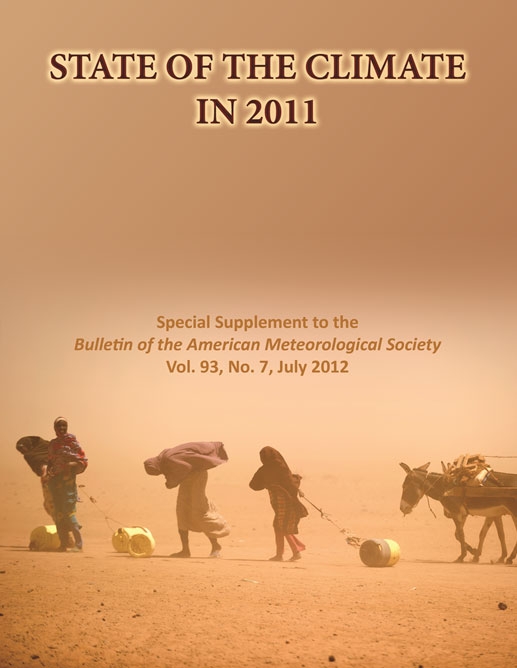According to the National Oceanic and Atmospheric Administration (NOAA), the last 12 months have been the warmest in the U.S. since record keeping began in 1895, averaging 55.7 degrees Fahrenheit — nearly three degrees warmer than the average May-April, and depending on the numbers for May 2012, the June 2011-May 2012 period will likely surpass this 12-month record.
But more importantly, NOAA is concerned about the lack of precipitation and the development of drought going into summer and the agricultural growing season. This includes the regions of: the Southeast, the Southern Rockies and Southern Plains, and the Northeast. But parts of Texas are already slipping back into drought status. We hope that the current rains will help Central Texas, but we have a lot of summer to go and our groundwater levels are still at lower than levels than many communities like.
Highlights from the NOAA report:
 12-month temps: Between May 2011 and April 2012 temperatures were 2.8 degrees above average, topping the earlier record of 2.7 degrees warmer set in November 1999 to October 2000. All 10 warmest consecutive 12 months have been since 1999.
12-month temps: Between May 2011 and April 2012 temperatures were 2.8 degrees above average, topping the earlier record of 2.7 degrees warmer set in November 1999 to October 2000. All 10 warmest consecutive 12 months have been since 1999.
Cities with record warmth in January-April include: Atlanta, Boston, Chicago, Detroit, New York City, Philadelphia, Tampa and Washington.
April temps: Last month was the third warmest April on record at 55 degrees — 3.6 degrees above average.
The monthly report follows one issued by the agency for March that found 15,000 records were broken in what is now the warmest March on record.
NOAA does not attribute the warmer temperatures solely to manmade global warming since other, natural factors influence weather as well. Instead, it notes that that the warmth is indicative of what one would expect with climate change.
Texas contributed greatly to the warmth of the nation for the past 12 months.
All-Time Record Highs (Any Month)
These Texas cities recorded temperatures in 2011 that exceeded any temperature on record for any month.
- Amarillo, Texas – 111 on June 26 (records since 1892)
- Borger, Texas – 113 on June 26 (records since 1949)
- Dalhart, Texas – 110 on June 26 (records since 1948)
- Childress, Texas – 117 on June 26 (records since 1893)
- Austin, Texas – 112 (tie) on August 28 (records since 1897)
- Houston, Texas – 109 (tie) on August 27 (records since 1889)
Heat Streaks & Days of 100+ Heat
- Midland, Texas – Record 64 days with 100+ degree highs in 2011. Previous record: 52 days in 1964.
- Wichita Falls, Texas – Record 52 straight days with 100+ degree highs June 22 through August 12. Record 100 days of 100+ highs and 12 days of 110+ highs. All previous records from 1980.
- Austin, Texas – 27 consecutive days with 100-degree highs July 17 through August 12. Breaks previous record of 21 straight days (July 12 – Aug. 1, 2001). 85 days of 100-degree heat in 2011 breaks record of 69 days in 1925.
- Dallas, Texas – 70 days with 100-degree heat sets new record for any year. Previous record: 69 days in 1980.
- Waco, Texas – Record 44 straight days with 100-degree highs June 30 – August 12. Record 87 total days of 100+ heat in 2011 (old record from 1980).
- Tyler, Texas – 46 consecutive days with 100-degree highs June 28 through August 12. 79 days with 100+ highs in 2011 also sets new record.
- Amarillo, Texas – 50 days with 100-degree heat in 2011 sets new record for any year. 58 straight days of 90+ heat also sets new record.
- San Angelo, Texas – 98 days with 100-degree heat sets new record for any year.
- Abilene, Texas – 80 days with 100-degree heat sets new record for any year.
- Houston, Texas- 24 straight days with 100-degree heat August 1 through August 24 breaks the longest streak on record of 14 days in 1980. 46 days with 100-degree heat in 2011 breaks record of 32 days in 1980.
- College Station, Texas – 66 days with 100-degree heat in 2011. Old record 58 days in 1917.
- Lufkin, Texas – 62 days with 100-degree heat in 2011 breaks record of 42 days in 1998. Record 26 straight days of 100+ degree heat (previous record: 14 straight days in July 1980).
- Del Rio, Texas – 83 days with 100-degree heat in 2011 breaks record of 78 days in 1953.
- Victoria, Texas – 56 days with 100-degree heat in 2011 breaks record of 42 days in 1912.
While all indications are that this summer will not be as bad as last summer, there are still concerns about the state’s water supplies, the stability of our electric grid and the impact another drought, even a mild one, will have on the state’s agricultural industry. So let’s all hope for more rain in May to fill up our lakes and our aquifers.
Read Full Post »




